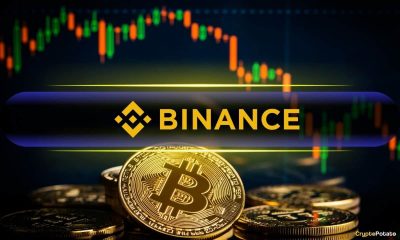Forex
Why is the euro weakening today and why investor confidence in further weakening is growing

Investor confidence in the euro weakening against the dollar continues to grow. The number of net positions for sale of the European currency is at its highest since the pandemic COVID-19, writes the Financial Times.
Pressure on the euro is given by traders’ concerns that rising energy prices will lead to a recession in the economy of the region, as well as the overall strengthening of the U.S. dollar, which is supported by the aggressive tightening of monetary policy by the Federal Reserve (FRS).
Why is the euro weakening today?
According to the Commodity Futures Trading Commission (CFTC), the number of net open positions to sell the euro during the week to 23 August totaled 44.1 thousand, compared to 42.8 thousand the week before. This is the highest since the first week of March 2020, when the number of open “short” positions in the euro reached 86.7 thousand.
The Euro is weakening against the dollar. It has fallen more than 14% since the beginning of this year and last week renewed a 20-year low amid a jump in gas prices.
“The euro exchange rate is now entirely driven by the European energy crisis,” said TD Securities currency analyst Mark McCormick. – “The key driver of euro value over the next couple of weeks will be news regarding the Nord Stream pipeline as well as gas prices.”
The increase in short positions in the euro is also because the dollar is considered a “safe haven in a storm” as well as the absence of a gas crisis in the U.S., says David Adams, who is in charge of foreign exchange strategy at Morgan Stanley (NYSE:MS).
Rising gas prices have forced investors to revise their forecasts on how long high inflation in the eurozone will last and how badly the European economy will suffer, the FT notes. European Central Bank (ECB) Executive Committee member Isabelle Schnabel and Bank of France governor Francois Villrois de Galo warned last week at an economic symposium in Jackson Hole that ECB monetary policy will have to remain tight for an extended time.
According to Adams, a risk factor for investors betting on further euro weakness is the possibility of a reversal of the “flow of money” that is now moving from Europe to the U.S. and elsewhere in the next 6-12 months as the ECB raises key interest rates, making European assets more attractive.
Earlier we reported that the dollar was strengthening against other currencies in anticipation of the Fed chief’s speech.

 Forex3 years ago
Forex3 years agoForex Today: the dollar is gaining strength amid gloomy sentiment at the start of the Fed’s week

 Forex3 years ago
Forex3 years agoUnbiased review of Pocket Option broker

 Forex3 years ago
Forex3 years agoDollar to pound sterling exchange rate today: Pound plummeted to its lowest since 1985

 Forex3 years ago
Forex3 years agoHow is the Australian dollar doing today?

 Cryptocurrency3 years ago
Cryptocurrency3 years agoWhat happened in the crypto market – current events today

 World3 years ago
World3 years agoWhy are modern video games an art form?

 Commodities3 years ago
Commodities3 years agoCopper continues to fall in price on expectations of lower demand in China

 Economy3 years ago
Economy3 years agoCrude oil tankers double in price due to EU anti-Russian sanctions























